The Next Great Black Fashion Journal, One Twitter Thread At A Time
Fashion Historian Shelby Ivey Christie Is Doing Memory’s Work
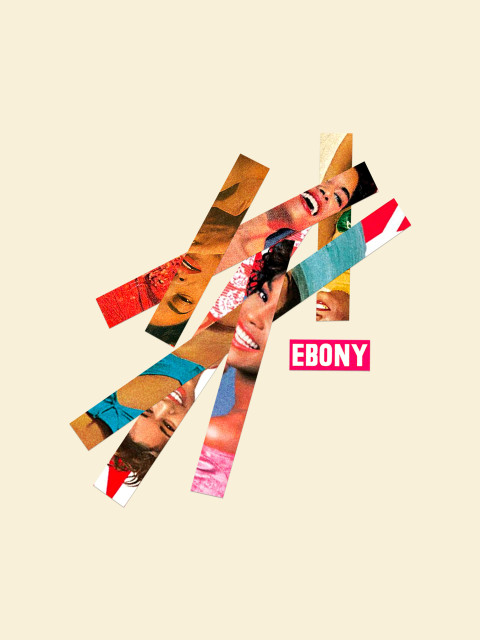
Every day, for two and a half years, Shelby Ivey Christie would get up, queue up some fashion history tweets on the subway ride to work, let them fly, then clock into her marketing job. She’d plug her phone into her laptop, and a growing chorus, now 39k-strong, grew there. Her tweets gesture toward a sort of live archive, an exercise in crowdsourced memory. She posts about fashion, and Black people, and history, and the history that Black people have made in fashion: Foxy Brown was a Galliano muse; the big appliqué flower dress Carrie Bradshaw wore to open was Whitney Houston’s first; early streetwear brands like WilliWear launched “alottttt” of higher-end fashion careers. She’s creating her own Black fashion journal, in the vernacular, one thread at a time.
Her fashion curiosity developed, like so many people who love fashion, through her parents. She read her mother’s and magazines, and rode shotgun on her father’s Golden Age film habit. “I remember seeing , and seeing all those beautiful textiles from the 40s and the silk and the feather boas and just being enamored with that.”The penchant for history was always there, like when she was a first-year at North Carolina Agricultural and Technical State University. A boyfriend going on about his own studies in the subject led her to take leave of her fashion merchandising major—and school itself—in order to spend time soaking up every bit of knowledge that Carolina Fashion Week had to offer. (She bounced between New York, Denver, and Charlotte as a child, but the Southern accent stuck and remains light atop her speech, like the final brush of buttermilk on some homemade biscuits.)From there, she wriggled her way to the publishing side of the industry—interning at and before slipping over to marketing at Mindshare, then , and now at a big beauty company. Now she’s returned to the academy to pursue a master's in costume studies at New York University, working to leave a paper trail of Black contributions in fashion. Class is remote, so things like learning how to handle archival fabrics or curating a mini fashion exhibit are done over Zoom: “a lotta Zooms,” as she puts it. We spoke about her mission over the phone, me in Brooklyn and her in North Carolina, where she’s riding out the pandemic. In a year or so, she’ll be done with her degree, and then it’s on to—who knows! Curation work, costume design, a book. But for now, there are the tweets.
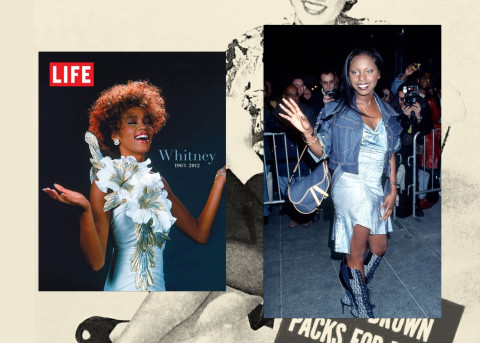
What does the word “fashion” mean to you?How did you come to think of fashion that way? What took you down that path?It’s funny, in America people identify New York as such a central place for the fashion industry. That’s where the designers are based and all that. But a place like North Carolina also has a really big role. Whether it’s the cotton, or the clothing manufacturing facilities: Brooks Brothers used to make their clothes there, or the White Oak denim, or VF Corporation, also North Face and Vans. How did fashion reach you as a child?There’s the idea of low fashion, what people around the way wear. And now you find yourself in more of a high-fashion context. How did that happen?So you go up to New York, and you get brought into this high-fashion world. You’re interning at . I’m assuming at some point you go back to school, you finish school. Then you’re back in New York. You’re working at , you’re working at . How did working in those kinds of environments push you towards doing the work of memory?
For me, “fashion” means the industry. In my discipline, we have categories—so, costume and dress would be when we talk about actual clothing and garments. Fashion pertains to the business.I think it’s just from working. For many years, I worked on the publishing side of the fashion industry, and more specifically on the business side, in marketing. Being a spoke in the wheel of the machine, you see it from the inside. You recognize it for what it is.It was mostly through costume in television and film, which is something I’m still really passionate about. And magazines. Growing up in a Black household, with a mom, you have —the other —and . The issue comes, and your mom puts it down and you go behind her and read it and see all the images of beautiful Black women who look like you.My dad is a really huge film buff. A lot of our time spent together is watching TV and films. And a lot of what I enjoyed about that experience, spending time watching films, was the clothing: seeing particularly period pieces and being able to say, "Oh, this is what they wore during that time." Why did they wear this? What was that made of?As far as North Carolina, though, I’m Southern. I’m proudly Southern. Just being here in the South, there is something sacred about being Southern and Black. I think a lot of our style and fashion and trends are still sacred in that the white gaze isn’t really on them. I try to take care not to just document these big moments, these big fashion topics that are recognized in mainstream culture and pop culture. You know, I’m talking about the way that crunk music came out in the South, and snap music, and we wore all those SpongeBob pajamas, and the kids’ cartoon bookbags. Those are the moments, growing up in North Carolina, that had an impression on me.A lot of my interning, particularly at , happened while I was away from college. I went in as a fashion major, and of course my whole family knows I’m the peacock of the family. Of course I love fashion. When I wanted to change my major to history, my parents were like, “No, you’re just a confused freshman. Stick with what you love and what you’re good at.” I felt very conflicted. I left school after getting really bad grades. When I did leave school, I was like, “Okay, let’s lean more into the fashion side.”The only fashion we really had here was people who go on the news and do style segments, so I hunted that woman down. Her name was Tasha Strong. She was kind enough to bring me on. She was connected to another Black woman—God bless Black women, by the way—named Bridgette West, who ran magazine, which is now magazine. I talked to her about being an assistant and interning. And she let me come on and write for her. I did that kind of very local fashion groundwork. When it was time to transition to a bigger, high-fashion kind of role, I had enough things on my resume.They did and didn’t. It wasn’t until I was out that it motivated me, in retrospect. I’ve been very vocal about some of my experiences in my time at . It’s not an easy landscape to navigate as a Black person, as a Black woman. And so, I think, in retrospect, looking back at that experience and being able to understand my day-to-day experiences with whiteness, in being on a team where maybe it’s you or one other person who’s Black, in seeing how edit is influenced by marketing, and marketing decisions are fueled by clients, and seeing power exchanged, and knowing if I wasn’t here to explain x, y, z in this meeting, it would never have been considered.It exposed me to how they can completely function in their whiteness and not have to live around or acknowledge or learn anything about not only Blackness, but anything outside of their whiteness. We don’t have the privilege to do that. We have to know about our thing and their thing in order to live, work, maintain relationships. Which then fueled my need to be like “Okay, these things are probably really important to document.”
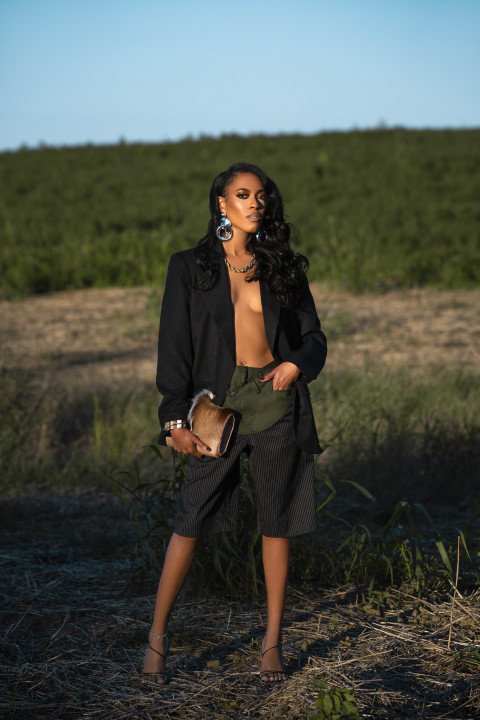
Who would you say the work of documenting is for? Is it more to show other Black people where these things come from? Or is it part of a project to make sure that people outside the Black community are educated?What harm do you think is done to the fashion industry, or fashion culturally, by having that history stay siloed?Do you have a utopia of what the fashion industry could look like, one that properly accounts for Black people and their ideas and the things that they want out of fashion?It seems like the biggest obstacle to that perfect world is the question of having the resources for the potential that’s left out. Even the idea of having the resources, and maybe they’re being shared, but they’re not being shared fast enough, or they’re not being shared equitably. If you could go to the CEO of LVMH or Kering or something and say, “This is what you need to do to divvy up these resources to the people who need it,” what do you think needs to happen there if people aren’t going to freely divvy things up?
I would say it’s twofold. Nothing that I do, as far as archives, is for white education, or at least not specifically. I never go into it saying, “White people, this is what you need to know today. I want to expose that you’re wrong. Gotcha!” That’s never my approach. It’s like “Here are the facts for everyone.” Documenting things is for historical tracking. It’s for when someone looks back 30 years from now, or these tweets go into the Library of Congress, it’s there. Whatever work I’m doing with my thesis or my papers, or my frameworks in school, it’s so I can submit those to journals, and it can be published in an academic text. People in grad school, we have to use certain kinds of sources. A lot of journals—things that are written, tangible. Anything that doesn’t have a source to tie it to is just theory.When you write a scholarly text or submit a paper, you might be invited to present that paper among other scholars. Then those scholars hear it—dress historians, professors, other people who teach about dress and costume and fashion—and they can say “Now, when I’m teaching my class about designers, I might want to bring up Ola Hudson.”Because then the stories aren’t getting the full perspective. We’ve seen articles and TV shows and everything about , and the fashion, and all of these things. The hats are the best parts of the movie, let’s be honest, when we talk about the costumes. I haven’t found a lot of sourcing about Mildred Blount, attributing that to her. That is literally the reason I have the urgency and the desire to do this every day. We look back at the interviews from the 40s and the 50s and see who was involved in the projects. If it doesn’t mention the Black milliner, how do we know to include her in the story? It is the gravity, the weight of changing history in fashion. I know people who are like, “It’s just clothes, relax.” But to me it’s really important. History can slip through the cracks if we’re not careful, so we have to be good stewards of it.I don’t, but I think it would just be so—it’s so interconnected to other industries. We have to look at who is making these garments. How are they paid, and what are their wages? That gets us to labor laws. You have to look at who owns licensing and who benefits from that. Do we reckon with cotton as a textile, and do we need to start that conversation afresh and anew? Do we need to get our reparations for that? There’s so many things that I haven’t even gotten to the place where I can imagine it. We’re seeing now, with the release of the September issue covers, that they’re trying to do some reconciling, but it seems very artificial and superficial, if I’m being honest. It’s not tokenism, but to have Kerry James Marshall—he’s a wonderful artist, I love his work and I’m a champion of his work—what again is that message sending? When the only Black women you see on the cover are Rihanna, Michelle Obama, Beyoncé, and Serena Williams, what does that say to Black people? That we have to be Beyoncé to be on the cover? We have to be Kerry James Marshall? We have to be Angela Davis to get recognized? So I don’t have a vision of what a utopia looks like. But I also don’t think it’s the mental labor for me to do, or for Black people to do.I don’t know, it’s broad. LVMH is retail, which has specific issues that aren’t standard across, maybe, publishing or brands or social, so it’s hard to say the solution would be as a blanket because a big assumption about fashion is that it’s one thing, when it isn’t. We have actors just like any other industry. I think that’s a good first step, to say, “You need to start looking at this business by act.” It needs to be, “What does the fashion influencer landscape need? What does the designer landscape need? What does the publishing landscape need? What does the freelancing landscape need? What does the styling landscape need? Media and marketing? And PR?” But maybe the whole system needs to be thrown away and reevaluated on the other side of COVID-19. I saw a schedule of New York Fashion Week, and they’re still having shows! I was like, “What’s not clicking? Why would you ever put any people near each other if it’s not necessary?”The thing about heritage, having worked at heritage brands, very old brands, they’re very resistant to change. They’ve been around 80, 100, 125 years. They’re not trying to innovate, and they didn’t really get there by innovating. So innovation is probably perceived as a risk, as a potential exposure.There’s so many things that need to change. The system can only be as good as its pieces, as its mechanics. And if the mechanics are white, it’s innately flawed. Is it going to get better as long as we’re dealing with racist, capitalistic white people? It’s things like that, that are systemic, that can’t be changed through conversation. It’s the nepotism in the fashion industry. The wealth gap. I just don’t know. The industry is just like any other system that we’re combating now. Again, it’s not our place to spin our wheels. The whites need to gather themselves and figure out what the go-forward is. The whiteness of it makes it flawed. As long as that’s present, it’s a huge question mark.
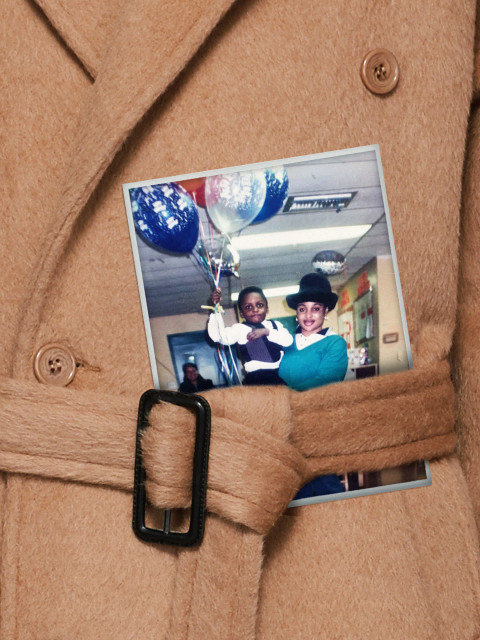 Cut From a Different Cloth: Winnie New York is Reinventing Suiting Kimberly Rose Drew & Idris Balogun Discuss Heritage, Tradition, and Inspiration There are very few designers who can say they landed their first Savile Row apprenticeship at the age of 14. The Nigerian-born British-raised designer Idris Balogun is one of them, and through his label Winnie New York , he has set out to bring an entirely new perspective to traditional tailoring. Today, Balogun is best known for his sterling CV with stints at both Burberry and Tom Ford, but his story really started long before going in-house.
Cut From a Different Cloth: Winnie New York is Reinventing Suiting Kimberly Rose Drew & Idris Balogun Discuss Heritage, Tradition, and Inspiration There are very few designers who can say they landed their first Savile Row apprenticeship at the age of 14. The Nigerian-born British-raised designer Idris Balogun is one of them, and through his label Winnie New York , he has set out to bring an entirely new perspective to traditional tailoring. Today, Balogun is best known for his sterling CV with stints at both Burberry and Tom Ford, but his story really started long before going in-house. 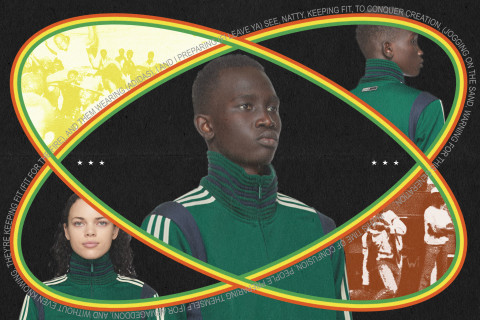 Present and Correct: adidas and Wales Bonner FW20 Ashley Clark on the Lineage of Resistance in British Caribbean Culture In the classic roots reggae track “ Jogging ” from 1980, Jamaican singer Freddie McGregor casts himself as the wise onlooker, surveying Kingston’s young adopters of the then-recent jogging craze. Over an irresistibly loping, bassy groove—not, itself, especially effective exercise music (I’ve tried)—McGregor watches as they “take three laps 'round Mona Reservoir, and sometimes two 'round Stadium Gardens / From Trafalgar Road on to Hope Road.
Present and Correct: adidas and Wales Bonner FW20 Ashley Clark on the Lineage of Resistance in British Caribbean Culture In the classic roots reggae track “ Jogging ” from 1980, Jamaican singer Freddie McGregor casts himself as the wise onlooker, surveying Kingston’s young adopters of the then-recent jogging craze. Over an irresistibly loping, bassy groove—not, itself, especially effective exercise music (I’ve tried)—McGregor watches as they “take three laps 'round Mona Reservoir, and sometimes two 'round Stadium Gardens / From Trafalgar Road on to Hope Road. 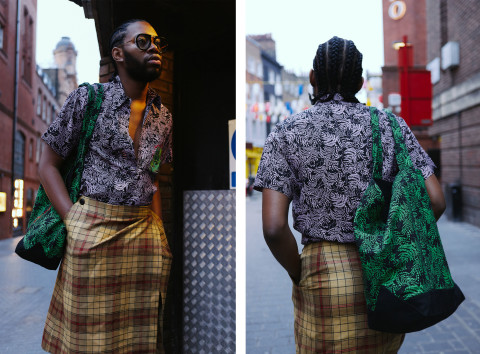 Introducing SSENSE WORKS With Jeremy O. Harris The Inaugural Collaboration Between SSENSE And Our Creative Community Every story wants an arc, and needs a season. In this moment, SSENSE WORKS invites you to explore an emblematic tribute for narrative discovery—an evolving dynamic between SSENSE and our creative community. We are proud to announce the playwright, polymath, and cover star of the Fall/Winter edition of SSENSE Magazine, Jeremy O. Harris, as our inaugural collaborator.
Introducing SSENSE WORKS With Jeremy O. Harris The Inaugural Collaboration Between SSENSE And Our Creative Community Every story wants an arc, and needs a season. In this moment, SSENSE WORKS invites you to explore an emblematic tribute for narrative discovery—an evolving dynamic between SSENSE and our creative community. We are proud to announce the playwright, polymath, and cover star of the Fall/Winter edition of SSENSE Magazine, Jeremy O. Harris, as our inaugural collaborator.